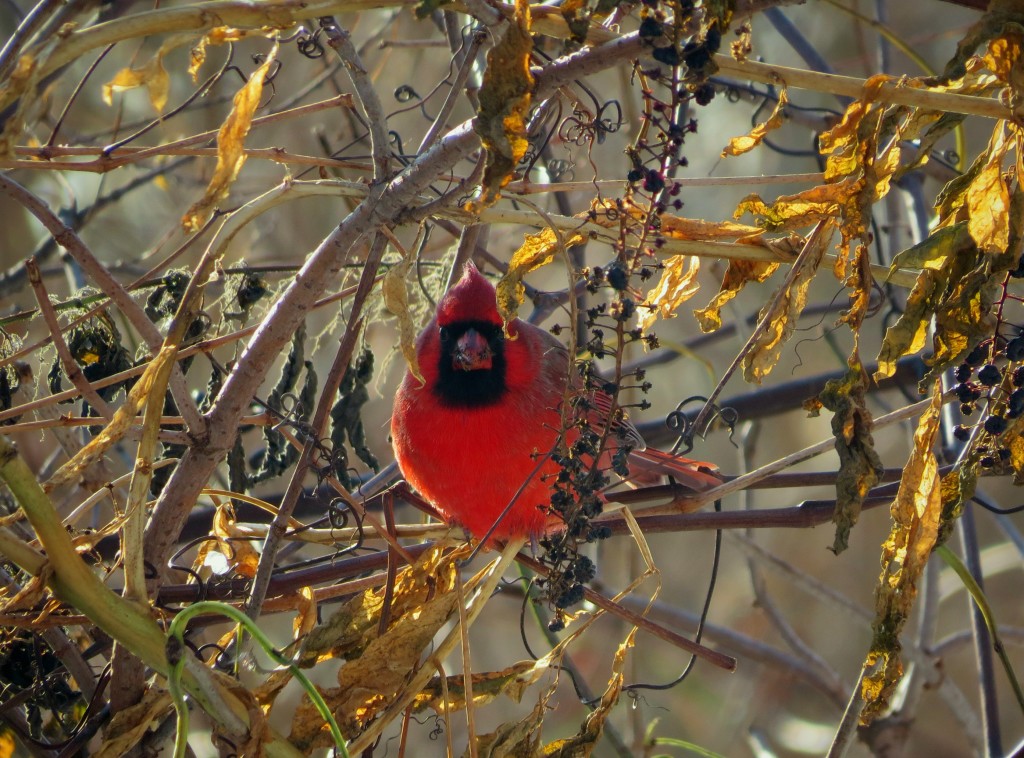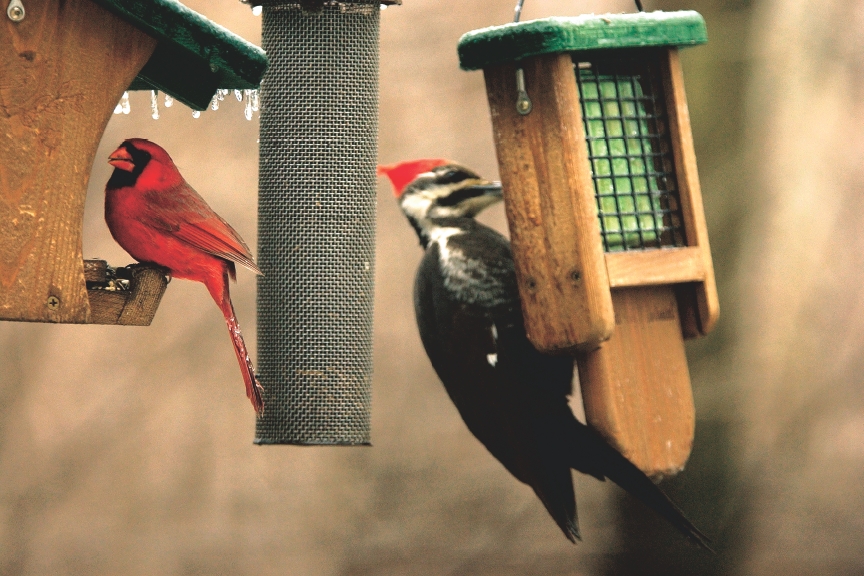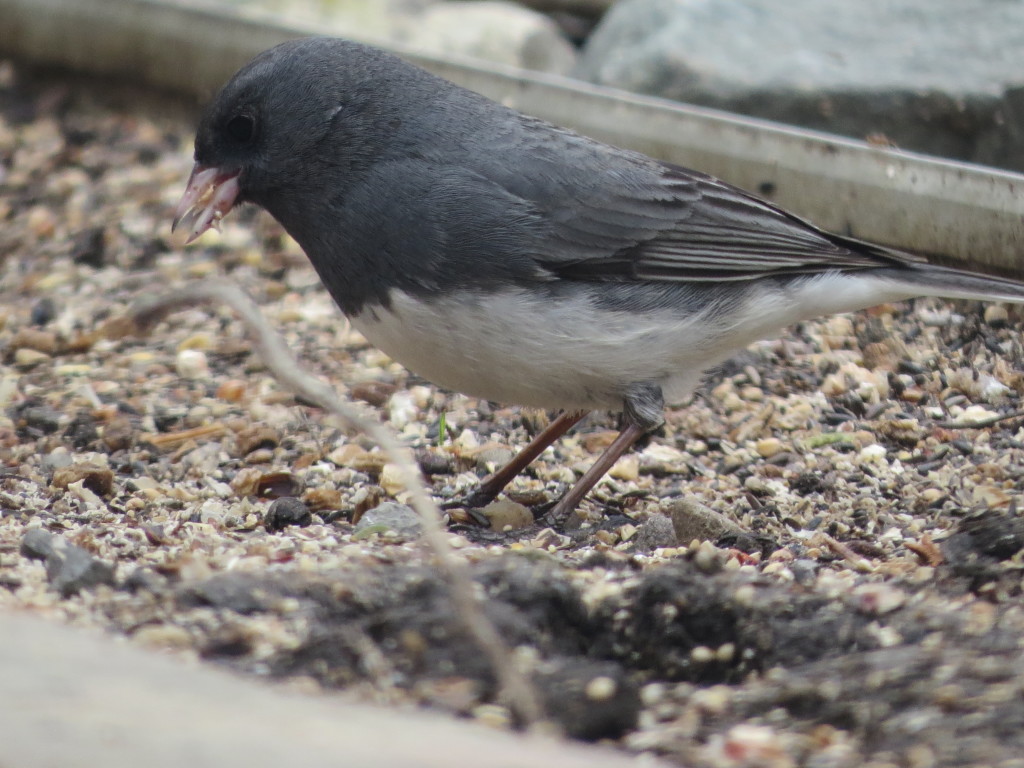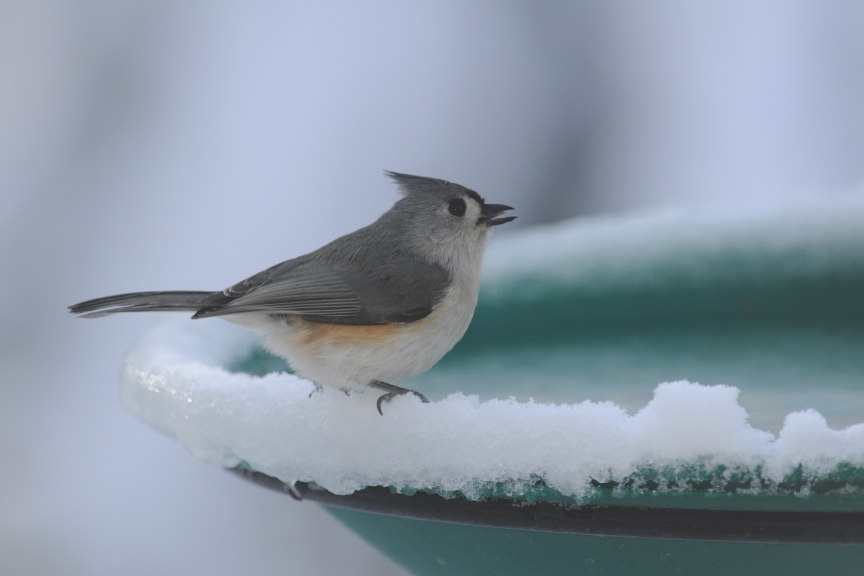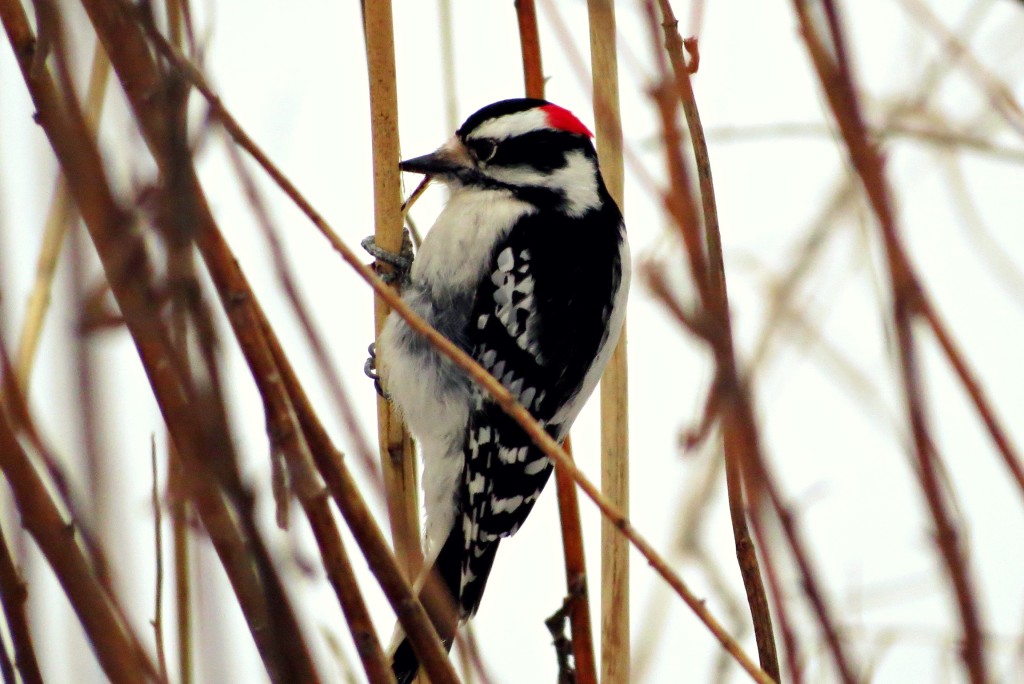As the seasons change and the weather gets colder, some bird species are getting ready to remain through the winter. Cardinals, Black-capped Chickadees, White-breasted Nuthatches, Tufted Titmice, House Finches, Downy Woodpeckers, Hairy Woodpeckers and Red-bellied Woodpeckers are all resident birds that remain in Michigan, expanding their feeding territories in order to find adequate food sources. All of these birds are well-loved by those who engage in the hobby of birdwatching. Their colors and antics add a dimension of joy to our lives as we view them at the feeding stations we provide.
All of these bird species can be attracted to your yard with the addition of bird feeders stocked with appropriate foods that they need. A blend of seeds high in fat and protein including sunflower (either in or out of the shell), peanuts and millet is a great place to start. If you want to attract larger bodied birds including Cardinals, a hopper feeder with a ledge or a tube feeder with a tray is necessary for them to be able to fit and reach the seed. Suet is the perfect substitute for the insects that are normally part of the diet of the Chickadees, Nuthatches and Woodpeckers. Suet is derived from the fat that surrounds the kidney of cattle. It is rendered, a process that removes impurities and adds shelf life. Extra ingredients may be added including peanuts and insects for protein. Fruit in suet is especially attractive to Red-bellied Woodpeckers. Placed in a suet cage, these birds are adept at clinging in order to feed.
Other bird species shift their locations within the United States, those farther north relocating to winter territories in the south. This includes Goldfinch, which move from Canada and the mid-states down to reach the lower states where they can be seen in the winter only. Blue Jays will migrate for the most part, with a small number of the entire population remaining behind in select territories. The same is true of Mourning Doves. Most of the blackbird species including Red-winged Blackbirds, Cowbirds and Grackles will migrate south. While many associate American Robins as a sure sign of spring, many have become accustomed to plentiful food sources in the way of fruit and remain here through winter, hedging their bets that they can make it through the cold. This strategy works for them if they can survive, as they will have the first choice of prime breeding territories to offer to the females, who leave the area altogether.
While some birds leave, a completely different set of birds arrive for the winter, leaving northern climes for this comparatively milder wintering ground. Most notably, Dark-eyed Juncos tell of the arrival of fall. The white proso millet in a seed blend is the favorite of the Juncos, which are a true sparrow and feed primarily on the ground. Other arriving sparrows include the American Tree Sparrow. This year has been a banner year for Red-breasted Nuthatches appearing at feeding stations as they settle into a winter territory. The prediction for the arrival of Winter Finches includes Pine Siskins, Purple Finches and Common Redpolls, based upon the lack of poorly available seed crops in Ontario.
Attracting finches can be accomplished by offering nyjer (thistle), a crop that is grown in Nigeria and Ethiopia and sterilized before it can be sold within the United States. A tube feeder designed with small holes to dispense the seed is the best way to offer this food. A blend of nyjer with small chips of sunflower is even more attractive to the Finches and to Chickadees.
Water is as essential to birds in the winter months as it is in the warmer ones. In fact, some birds visit the yard specifically for this reason alone, notably the American Robin. Using a plastic dish with the heating element built into it is the most convenient way to provide a water source. These bird baths are thermostatically controlled and will cycle on and off to keep the water at a temperature just above freezing. Another option is the addition of a heating element that can be added to a plastic or metal bird bath. Manufacturers of cement and ceramic bird baths warn against the use of heaters as those types of baths can break if a small crack succumbs to the effect of water freezing within.
One of the major challenges for those who want to feed the birds is the fact that squirrels don’t understand the term “bird feeder”. If the feeder has seeds or suet, they will help themselves. There are some very effective squirrel-proof feeders on the market that are made entirely of metal and close with the weight of mammals. If you prefer to use seed in a window feeder or another place that mammals can access, safflower seed has a bitter taste to mammals and can be used in those situations. Feeding stations on a pole system with a baffle mounted on the pole to prevent mammals from climbing is another answer. Placement of feeders is key, as the setup needs to be far enough so that sideways leaps cannot be accomplished. The baffle top needs to be five feet from the ground and all feeders in the zone above that five feet limit. Another alternative is to offer seed and suet that are treated with hot pepper as the mammals have more taste buds than birds and are adversely affected, whereas the birds are not.
Planning your habitat for birds in the winter would include an area in your yard or neighboring yard that includes evergreens for shelter. In poor weather conditions and during the night, birds must have these areas for roosting. Some birds use cavities for shelter, both excavated by themselves or provided in the form of a nest box. If you see the entrance to a cavity, leaving the branch is the best option for the bird. Providing a winter roost box or keeping a functional nest box outside can make the all the difference in winter survival for birds.
Many plants bear fruit that persists during the winter and provides natural food sources for birds. Holly berries need to freeze and thaw a number of times before they become palatable to birds. Insects can be found by birds in many types of plant material. The galls in Goldenrods contain an insect that will be chiseled out by Chickadees or Woodpeckers. Sumac seed heads also contain insects that the birds will find nourishing. Many of our flowers can be left as a food source for winter birds including coneflowers and all other flowers with a composite seed head. Goldenrod is the favorite food of our native sparrows that spend the winter including the Juncos and White-throated Sparrows that may call our yard home.
Whatever you choose to do in your yard, the hobby of bird feeding can be a joyful one for you. The added bonus is that the resident birds will be healthy at the onset of spring, ready to claim your yard as part of their territory. With that, a new generation of birds can be a welcome addition to look forward to.
Enjoy your Birds!
Have you joined our email list? Click here to sign up, it’s free and gives you access to sales, coupons, nature news, events, and more!

